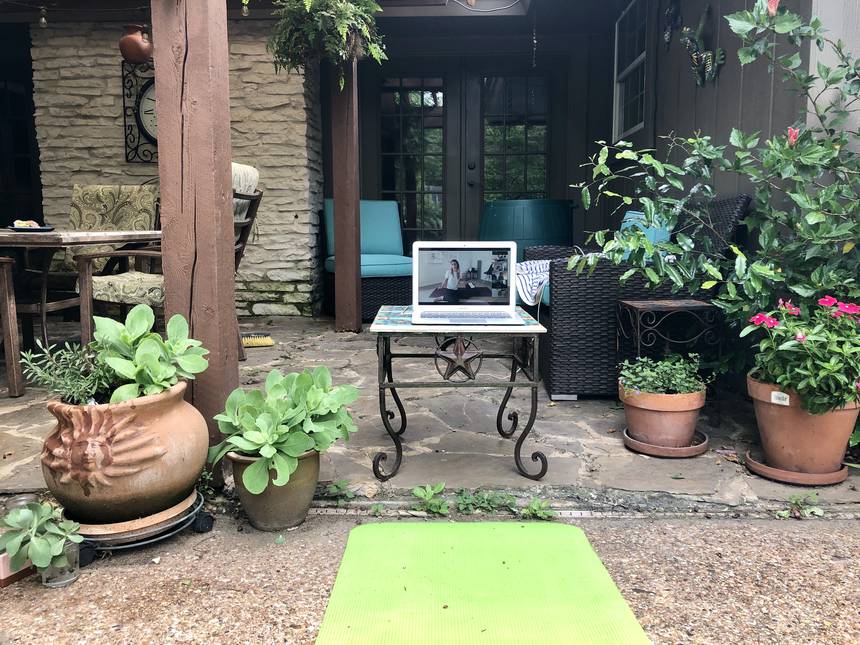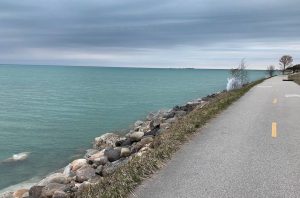The surprising link between Pilates and the 1918 flu pandemic

The origins of Joseph Pilates’ regimented workout program began when he was sequestered in an internment camp in England during WWI.
I approach any exercise group activity with much trepidation and some suspicion — simply put, it’s just not my thing. To me, exercise has to have a point or a tangible end goal, like, say, running after a small child or chopping wood for a fire. Pre-coronavirus, this meant I would turn any small errand into an excuse to go for a neighborhood stroll: picking up a croissant from the corner bakery, dropping off a prescription at my pharmacy, or returning a library book.
Now that those ventures are temporarily shuttered, I walk my dogs. A lot. But while cardio is great for getting one’s heart rate up, I know stretching and flexibility are just as important. Yoga is wonderful for providing mindfulness and gentle stretching, and there’s also Pilates, a low-impact exercise method that was developed by a German health enthusiast in the early twentieth century. Before I took my first Pilates class, I thought of it as primarily an expensive class for the moneyed elites, inaccessible to most people. And indeed, because Pilates Reformer classes require using a specific machine and skilled instructors, the small classes can be quite pricey. I ended up loving the few classes I took and the machine itself, but my frugality won over when the reduced-price classes ended.
Because of that, I rarely attend Pilates classes, let alone try any attempts at home. But during this time of self-isolation, I forced myself to take an online Zoom class with a couple friends, including Liz Shapiro, a licensed Pilates instructor who normally teaches at CORE Therapy & Pilates in Austin. Before the class began, Shapiro informed us that Joseph Pilates, the founder, actually developed his methods while in an internment camp during WWI, during the middle of the 1918 influenza pandemic.
After class, I asked Shapiro if she could share more about Pilates’ history. “The history of how Joseph Pilates started is very important in the Pilates’ world,” Shapiro explained. “That lore has always been in the background as I trained.” Joseph Hubertus Pilates was born in Monchengladbach, Germany, in 1883. “He was a sickly child,” said Shapiro. “He had asthma, rickets and some other health challenges, so his goal was to work on his body to feel healthy and strong.” It worked — by adulthood, Pilates was an avid skier, boxer, gymnast, and diver.
In 1912, he moved to England to work as a self-defense instructor for no less than the Scotland Yard. But when WWI erupted, Pilates, as a German national, was sent to an internment camp. It was here, cooped up with other detainees, that Pilates began to refine his techniques and train other men, even those that were injured. According to the Pilates website, “He rigged springs to hospital beds, enabling bedridden patients to exercise against resistance, an innovation that led to his later equipment designs.”
I’d always thought the whole point of Pilates was to use the Reformer, the original apparatus he created, but Shapiro further enlightened me: “Mat Pilates was the original. When they moved him to take care of infirmed detainees, he had to figure out a way to incorporate this. The Reformer is based on the resistance of strings. He just used what he had. For people who were injured or sick — to be able to exercise laying down, it was a godsend.” And as the legend goes, not one of Pilates’ trainees died when the 1918 flu epidemic swept through England, which killed approximately 50 million people worldwide.
I asked Shapiro how she liked teaching remote classes as opposed to her usual intimate, in-person classes. “This new virtual teaching world that I’ve found myself in has me doing way more Pilates than I’ve ever done in my life as a teacher,” she said. “Doing the mat classes has only reenforced this exercise methodology. I’ve really felt the benefits from doing it consistently.”
Since mindfulness is such a hot topic these days in regards to maintaining our mental health during these trying times, I wondered if Pilates himself would have any thoughts on that as well. Shapiro agreed, explaining, “He called his method ‘Contrology.’ It was all about control. To control your body, you have to use your mind. That mental aspect was very important to his method.”
Indeed, the link between mental health and exercise is undeniable. Though I don’t see myself jumping into a soul-cycling class anytime soon, I can get behind Pilates’ idea of whole body health. There’s never been a more important time to take care of ourselves, both mentally and physically. Adds Shapiro, “He really believed in the Greek ideal of a man, which is mind, body and spirit — to be strong in all aspects.”
The origins of Joseph Pilates’ regimented workout program began when he was sequestered in an internment camp in England during WWI.
Please enable JavaScript to view the comments.







